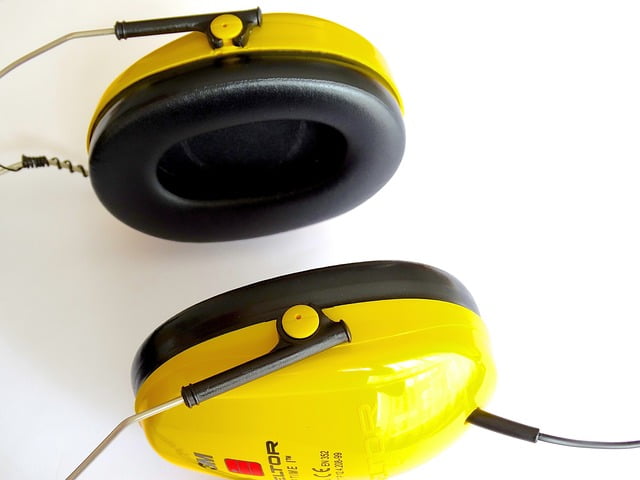Is 140 Db Hearing Safe?
You might be wondering whether 140 dB hearing is safe, but the answer is not as simple as it seems. While the allure of loud sounds can be enticing, the risks associated with exposure to such high decibel levels pose a serious threat to your auditory well-being. Understanding the potential consequences and taking appropriate precautions can make all the difference in preserving your precious sense of hearing. Are you prepared to take the necessary steps to safeguard your ears from harm?
We are supported by our audience. When you purchase through links on our site, we may earn an affiliate commission, at no extra cost for you. Learn more. Last update on 3rd July 2025 / Images from Amazon Product Advertising API.
Potential Risks of 140 Db Exposure
What are the potential risks associated with exposure to 140 dB noise levels? Exposure to sound levels of 140 dB poses significant risks to your hearing health. At this intensity, sound waves can cause immediate and severe damage to your ears. Prolonged exposure to 140 dB noise levels can lead to irreversible harm, resulting in permanent hearing loss. The auditory system is sensitive, and exposure to such high sound levels can cause noise-induced hearing loss.
To safeguard your hearing, it is crucial to understand the importance of protection when exposed to 140 dB sounds. Wearing earplugs or earmuffs is essential in environments where you may encounter such noise levels. These protective measures act as barriers, reducing the intensity of sound reaching your ears and mitigating the risk of damage.
Health experts emphasize that exposure to 140 dB noise levels can not only impact your hearing but also lead to other physical discomfort due to the intensity of the sound waves. The body perceives this level of noise as pain, underscoring the necessity of avoiding such exposure.

Effects on Hearing Health
Exposure to 140 dB noise levels poses a significant risk to your hearing health, leading to instant damage and potential permanent hearing loss. This high level of sound intensity is extremely loud and can cause immediate harm to your ears. Here are some key effects on your hearing health to consider:
- Irreversible Damage: Sounds at 140 dB are beyond safe limits and can lead to irreversible harm to the inner ear.
- Severe Auditory Injuries: Prolonged exposure to 140 dB noise can result in severe auditory injuries, impacting your overall hearing health.
- Threshold of Danger: The threshold of 140 dB is considered dangerous and should be avoided to prevent immediate and long-term harm to your hearing.
When exposed to such high noise levels, the intense peak sound pressure can damage the delicate structures in your ear, leading to both hearing loss and tinnitus. It is essential to prioritize your hearing health by using hearing protection devices and avoiding environments where 140 dB noise levels are present. Utilizing tools like a sound level meter can help you monitor and assess the intensity of the noise around you, enabling you to take necessary precautions to prevent permanent hearing damage due to Noise Exposure.
Recommended Safety Measures
To ensure protection against the detrimental effects of exposure to 140 dB noise levels, implementing recommended safety measures is crucial for preserving auditory health. Sound intensity is measured in decibels (dB), and exposure to sounds above 140 dB can lead to immediate and severe damage to your hearing health. The National Institute for Occupational Safety and Health (NIOSH) emphasizes the importance of safeguarding your hearing from excessive noise levels.
One vital safety measure to protect your hearing is to wear proper hearing protection, such as earplugs or earmuffs, when in environments where sounds reach 140 dB. This is especially crucial in settings with impulse noises like explosions, where the safe exposure limit is set at 140 dB peak for adults to prevent irreversible hearing damage. Additionally, implementing engineering controls to reduce noise levels below 140 dB is necessary in high-noise environments to prevent noise-induced hearing loss.

Understanding Decibel Levels
Understanding decibel levels is essential for assessing the potential harm that different sound intensities can pose to your hearing health. When it comes to sound intensity, the measurement unit used is decibels (dB). Here are three key points to help you grasp the significance of decibel levels:
- Decibels (dB): Decibels are used to quantify sound intensity levels. The higher the dB level, the louder the sound.
- Permanent Damage: According to the National Center for Environmental, the Environmental Protection Agency, and the World Health Organization, exposure to sounds at 140 dB or higher can cause permanent damage to your hearing.
- Occupational Standards: The Centers for Disease Control and Prevention and the Occupational Safety and Health Administration have set standards to protect workers from exposure to high decibel levels in the workplace.
Importance of Hearing Protection
Hearing protection becomes critical when exposed to sound levels of 140 dB to prevent irreversible damage to your auditory system. The National Institute for Occupational Safety and Health (NIOSH) and the Centers for Disease Control and Prevention (CDC) highlight the importance of safeguarding your hearing in environments where noise levels are measured at 140 dB or higher. Prolonged exposure to such high noise levels can cause irreversible damage to the delicate inner ear structures, leading to permanent hearing loss.
The Environmental Protection Agency (EPA) identifies noise as a prevalent environmental hazard that can cause hearing loss. To mitigate this risk, utilizing ear protection devices such as earplugs or earmuffs is crucial. These devices act as barriers to reduce the intensity of sound reaching your ears, thereby protecting your auditory health.
Employing ear protection measures is essential to prevent the adverse effects of exposure to 140 dB noise levels. By prioritizing the use of ear protection in noisy environments, you can significantly reduce the likelihood of sustaining long-term damage to your hearing. Remember, your auditory system is delicate, and taking proactive steps to protect it from harm is paramount.

